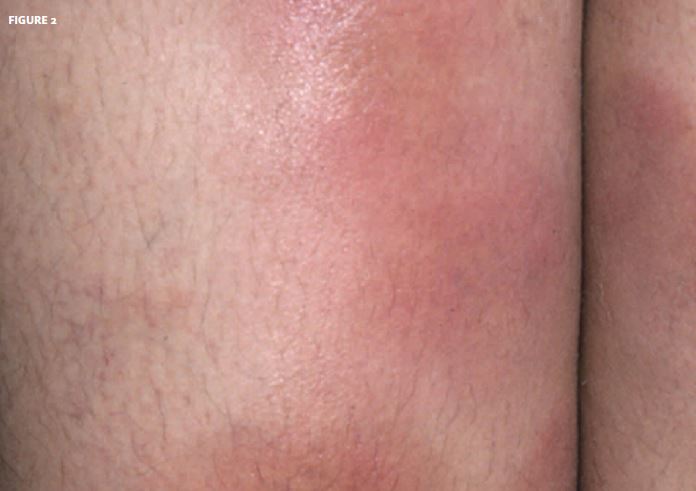Resolution

The diagnosis is erythema nodosum, the most common type of inflammatory panniculitis.
Erythema nodosum is characterized by erythematous tender nodules and plaques that are initially bright red and slightly elevated. They are typically symmetrical and located on the pretibial region but can occur elsewhere. Upper respiratory tract infection or flu-like symptoms may precede or accompany the development of the eruption. Streptococcal infections are a common etiologic factor. Sarcoidosis, inflammatory bowel disease, and medications have also been implicated. Patients with malignancies, patients undergoing radiation treatment for malignancies, and those with Behcet’s syndrome, reactive arthritis, Sweet’s syndrome, ulcerative acne conglobate, and Sjogren syndrome may develop erythema nodosum. Often a cause or trigger is never found. The eruption typically persists for 3 to 6 weeks and spontaneously regresses without scarring or atrophy. Bed rest and limb elevation are important alleviating measures, and NSAIDs may also be helpful.
It is important to identify and treat any underlying causes of the condition. Investigations may include ASO titers, throat culture, tuberculin skin testing, and/or histoplasmin complement fixation. All patients with erythema nodosum should have a complete blood count and chest x-ray to rule out associated pulmonary tuberculosis, coccidioidomycosis, or sarcoidosis. The need for further investigation depends on the patient’s age (child vs. adult) and history).
Acknowledgement: Case reprinted with permission from the Logical Images digital medical image library. For more information, visit http://logicalimages.com.
